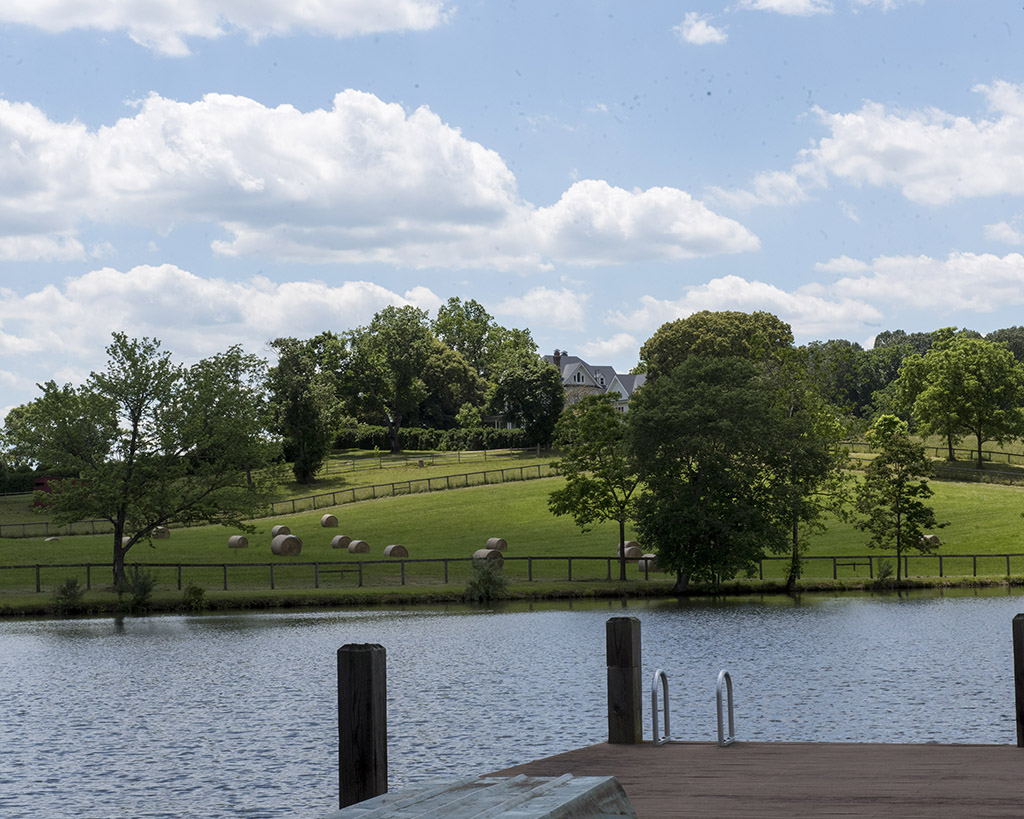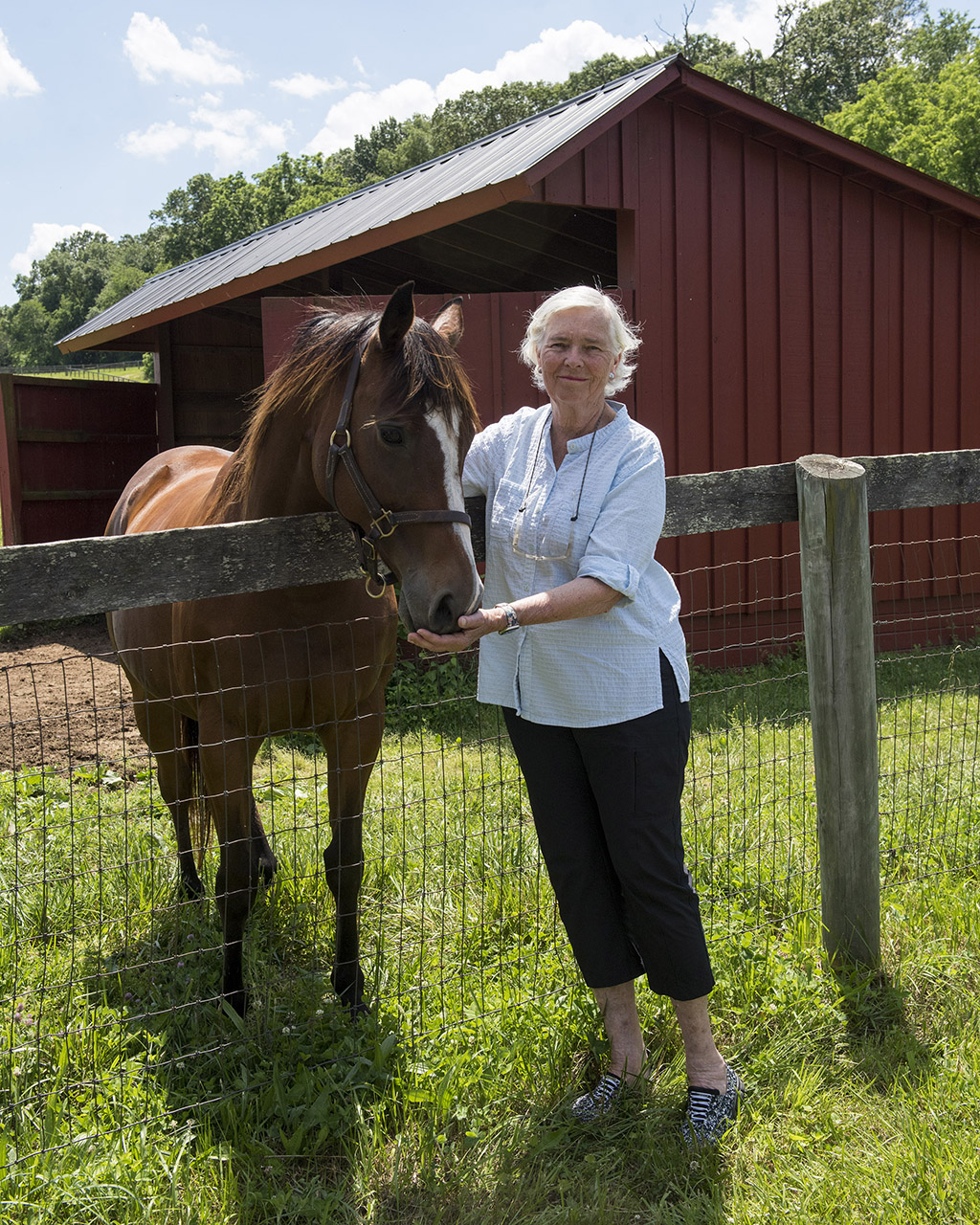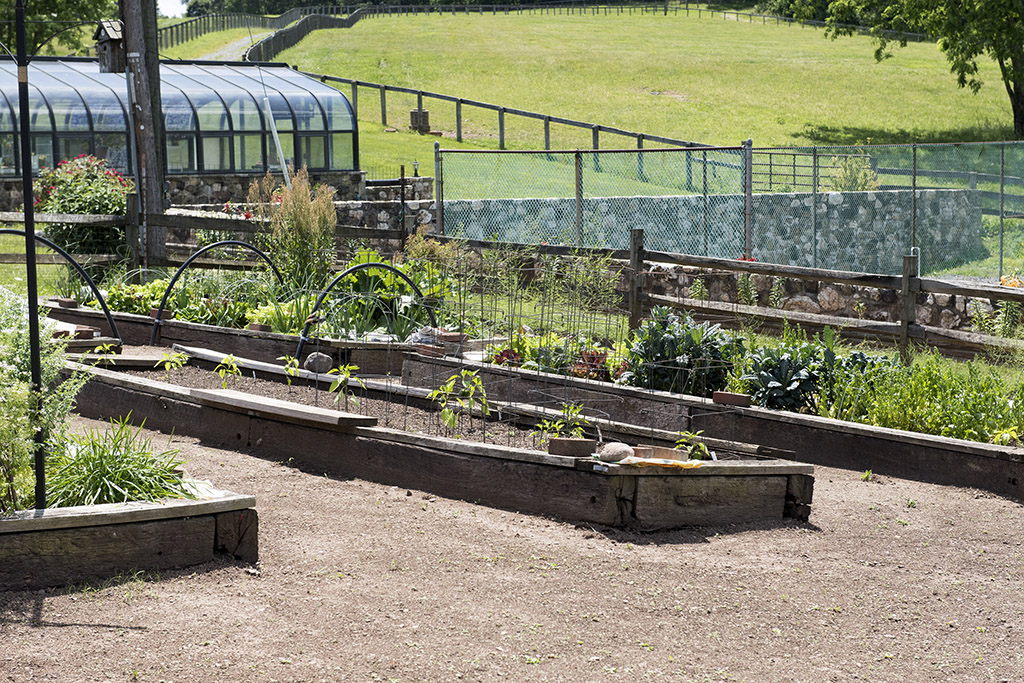Landfall Farm

Committed to Conservation
By Heidi Baumstark | Photos by Joanne Maisano
Landfall. Merriam-Webster defines the word as “a sighting of land after a voyage or flight; a reaching of land.” That’s what the Cantacuzenes named their Loudoun County property after years at sea. It was time to return to land.
That was in 1970 when the late Rodion Cantacuzene and his wife, Melissa, moved to their property they named Landfall Farm on Tail Race Road just outside the 19th century village of Aldie. Since then, they have acquired more land — totaling 513 acres — and have been sticking to landside and doing a stellar job preserving it.
How? By placing the entire property under conservation easement with the Land Trust of Virginia (LTV), headquartered in Middleburg. At 87, Rodion, a retired Navy captain, passed away March 16, 2016, at his beloved Landfall Farm. Part of his ancestry includes being the great, great grandson of President Ulysses S. Grant, who led the Union army into victory of the Civil War before serving as the nation’s 18th president from 1869 to 1877.
“Rodion was a Navy captain of a destroyer,” Melissa said. “After his sea duty, we moved from Virginia Beach to Aldie, and he was stationed at the Pentagon. At that point, we had three children, five horses, some dogs, and a cat. So, we had to find a place for all of us that was still within commuting distance. And as a fox hunter, we needed open space.”
“Melissa was a Master of the Middleburg Hunt twice for a total of 12 years,” Jeffrey Blue said, one of the MFH (Master of Fox Hounds) of the Middleburg Hunt. “We hunted Five Mile Woods near Snickersville Turnpike; it has lots of foxes in there and open land, and is a great place to hunt, rugged and hilly. She’s been a staunch supporter of open space. Rodion fox hunted, too; he was a wonderful man, a great host, a fabulous couple.”
When the Cantacuzenes moved to their Aldie property, there was a classic 1900 Sears house already there, which they enlarged to three stories over the years. “Before, it was a dairy farm. Now we have cattle, make hay, and have tons of horses,” Melissa said.
Understanding the importance of preserving land, two easements were placed with LTV in December 2007: a 61-acre parcel and a 100-acre section. In December 2013, a third easement of 223 acres was placed. The fourth and final one includes 129 acres, bringing the full 513-acre property under conservation easement.
“We didn’t want the land to be developed, so we purchased more land as time passed,” Melissa said. “The fourth easement is a result of acquiring additional land after 2013 and it’s set to be recorded in July,” Ashton Cole, LTV’s Director of Conservation and Stewardship, said. LTV is currently in 17 Virginia counties; presently, Loudoun takes the lead.

Melissa Cantacuzene
“By far, Loudoun has our largest number of easements and acreage,” Cole said. With this 129-acre portion of Landfall Farm, LTV’s total acreage in Loudoun is 9,316 acres. Overall, LTV holds 191 easements totaling 21,150 acres, and it owns five other conservation properties that includes 557 acres. “This brings our total to 21,707 acres in easements,” he said.
When landowners place land under easement, “they’re donating a conservation easement, which is a portion of their property rights,” Cole said. “Most easements limit the number and location of structures, and the overall footprint of buildings, so they’re not peppered throughout. The restrictions are tied to the property’s natural resources.”
Those natural resources at Landfall Farm include a mix of forest, open land, ponds, and a stream that is a perennial tributary to Little River, which flows into Goose Creek, a state scenic river and major tributary to the Potomac River and Chesapeake Bay. Little River is what powered nearby Aldie Mill, built from 1807-1809, about a mile down the road on Route 50.
“This property hits all the LTV values,” Cole said. It also has historic value since it adjoins to the rear portion of Oak Hill, the 1822-built home of President James Monroe (1758-1831) on Route 15 (which runs parallel to Tail Race Road). In fact, Aldie Mill ground grain for Monroe when he lived at Oak Hill, now privately owned, and is on the National Register of Historic Places. The fourth and final easement is south of the others, making it closest to Route 50, approaching the Aldie Mill National Register Historic District.
And about that history: In 1803, Charles Fenton Mercer (1778-1858), noted military officer and legislator, settled near the Littler River where he began his law practice in Loudoun County, which was established in 1757, named for General John Campbell (1705-1782), 4th Earl of Loudoun, a Scottish nobleman, and army officer. On a hill above the point where the Little River Turnpike in Aldie (Route 50, presently named John Mosby Highway) crossed the river, Mercer built his two-story brick house. The following year in 1804, he obtained legal rights to erect a mill dam on the Little River, as well as the right to raise the river’s water for the purpose of erecting a mill — this would become the brick Aldie Mill built on a stone foundation, across the turnpike from Mercer’s house. In 1810, Mercer named the village Aldie after Aldie Castle, the ancestral home of the Mercer family in Scotland. That year, the Virginia General Assembly chartered the village, which grew up around the mill.
From 1810-1817, Mercer was a member of the Virginia House of Delegates. He was appointed a lieutenant colonel of a Virginia regiment in the War of 1812. In 1817, he was elected as a U.S. Congressman serving 11 terms until 1839 and became an outspoken opponent of the African slave trade. He was known as a champion of free public education, suppression of the slave trade, and supported the colonization in Africa for freed slaves.
In “Time Stands Still at the Old Aldie Mill,” Waterford historian and mapmaker, Eugene Scheel, writes in 2012 that within a decade of its founding, Aldie became the “nexus of three turnpike roads, became the fourth largest community (268 people) in Loudoun County after Leesburg, Waterford, and Middleburg.” Travelers and commerce could move west to Middleburg and Upperville and the Blue Ridge along Ashby’s Gap Turnpike (today’s Route 50); east to Fairfax and Alexandria along Little River Turnpike (also Route 50 from Aldie and points east); or northwest toward Bluemont along Snickersville Turnpike (Route 734).
Farmers relied on the mill for their livelihoods since their milled products could be transported on the Little River Turnpike to the Alexandria port where goods were shipped overseas to Europe. Afterall, Little River Turnpike ran nearly a straight-line course from Aldie to Alexandria, a distance of approximately 34 miles of “paved road by 1811,” according to the National Register of Historic Places Little River Turnpike Bridge Report of 2014.

Tail Race Road (Route 612) is a rural, gravel road in Aldie (about a mile west of Gilbert’s Corner), a picturesque village in the gap of the Little River at the northern end of the Bull Run Mountains. “Tail Race” refers to the “tail” — the end — of the millrace where the water from Aldie Mill flowed out of. The head race is to the west of Aldie Mill on Aldie Dam Road. Waters from Little River flow west to east, and powered Aldie Mill.
Regarding the Civil War, local history author Lee Lawrence noted, “Union troops moved in huge numbers along Little River Turnpike/Ashby’s Gap Turnpike [Route 50] and fought, skirmished, and traveled along it. Most were Union troops since they were coming into Virginia and occupying this region from April 1862 onward. I know they used Old Carolina Road (today’s Route 15, James Monroe Highway) and Little River Turnpike/Ashby’s Gap Turnpike. There weren’t that many roads available to move wagons, heavy artillery, march men, and so on; so, any road had to be utilized.” Aldie was the Union’s staging ground in June 1863 with the Battle of Aldie breaking out on June 17. (Further west, the Battle of Middleburg broke out June 17-19, and just up the road, was the Battle of Upperville on June 21.)
A chart titled, “Moore-Douglass Aldie Millers,” provided by Tracy Gillespie, NOVA Parks Site Manager for Aldie Mill, shows that in 1835, Charles Fenton Mercer sold the mill to Captain John Moore who was one of the few Union sympathizers who did not vote for secession. According to “Time Stands Still at the Old Aldie Mill,” it is believed that the mill “escaped being burnt by Federal raiders during the Civil War because Moore was a Union man who voted against secession in 1861 — one of five people in Aldie to do so.”

The mill passed through the Moore-Douglass family for six generations until it ceased operations in 1971. The last owner/miller was James Edwards Douglass. “When we moved here, the mill was still selling feed,” Melissa said.
In 1981, Douglass and his wife, Sarah Love Douglass, donated the mill property to the Virginia Outdoors Foundation. In 2006, the mill was turned over to the Northern Virginia Regional Park Authority (NOVA Parks). “I believe in the Land Trust of Virginia; it’s why I’m agreeing to this article,” Melissa said. “Land conservation is so important if we want to maintain the countryside.”
“We always had great sport at Landfall,” Blue added. “Melissa’s a wonderful person and has been so generous with her land, and generous in many other ways, too. And if you want to fox hunt, you have to have open land.”
“The property represents a long-term commitment by the Cantacuzene family to conserve their corner of the Virginia Piedmont at the front edge of the wave of development spilling over into western Loudoun and threatening the permanent loss of open spaces and family farms that have persisted since the founding of the country,” Cole said. “Thanks to conservation-minded individuals like the Cantacuzenes, their farm will be available for future generations of Loudoun farmers.”
While Merriam-Webster may define the term “landfall” as “a sighting of land,” Cole describes Landfall Farm as “idyllic, pastoral, bucolic.” ML
LTV is located at 119 The Plains Road, Suite 200, Middleburg. Reach them at 540-687-8441 or landtrustva.org.
This article first appeared in the July 2020 issue of Middleburg Life.





